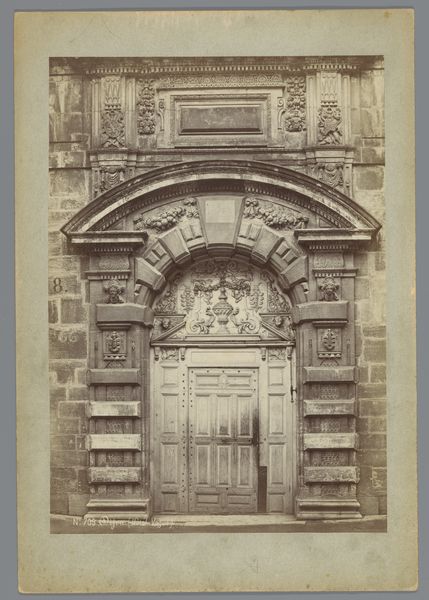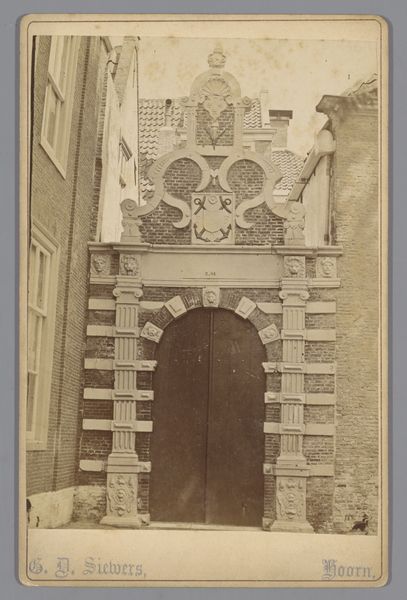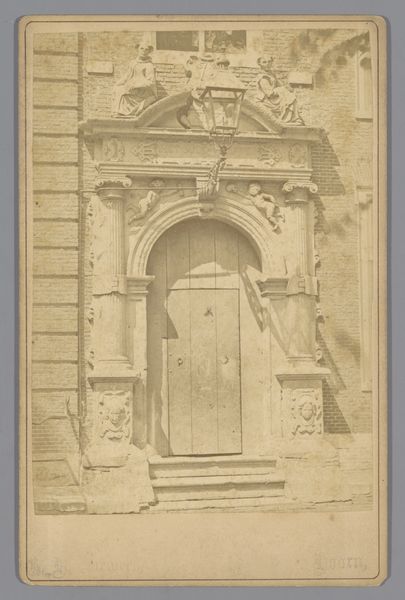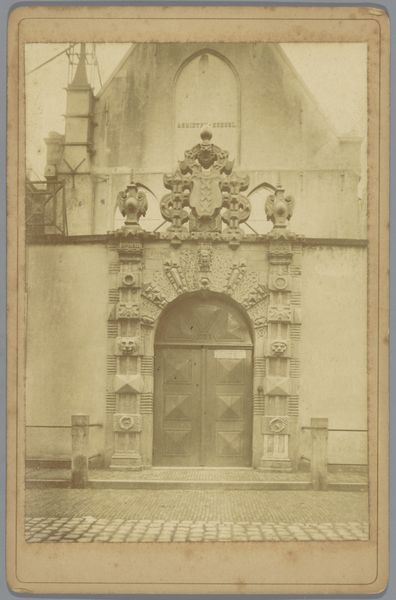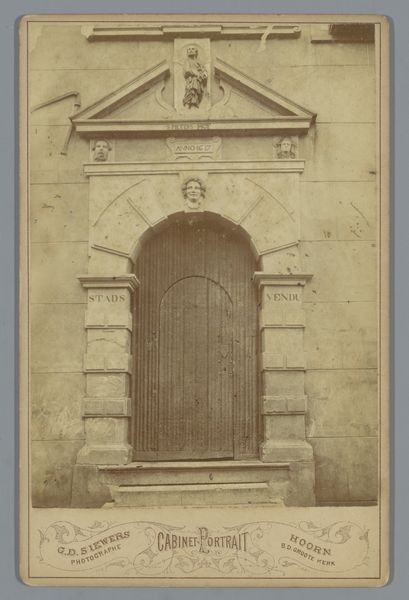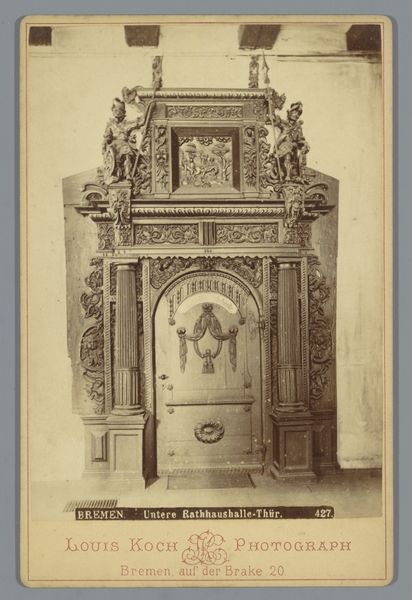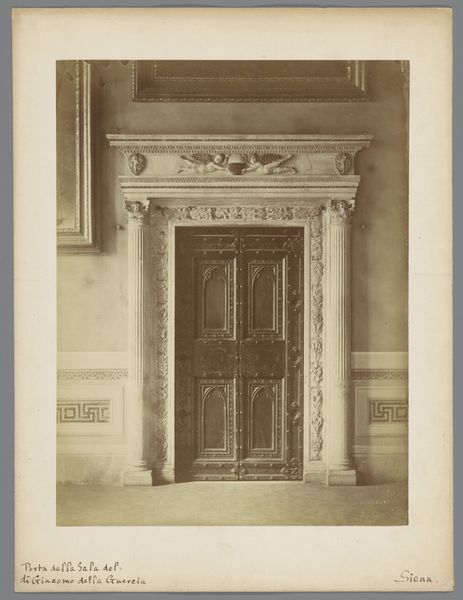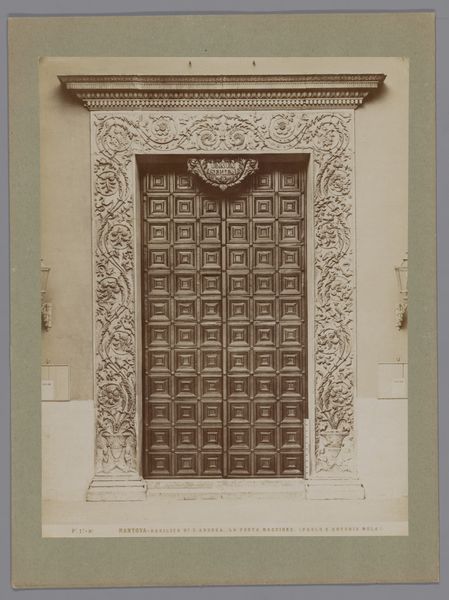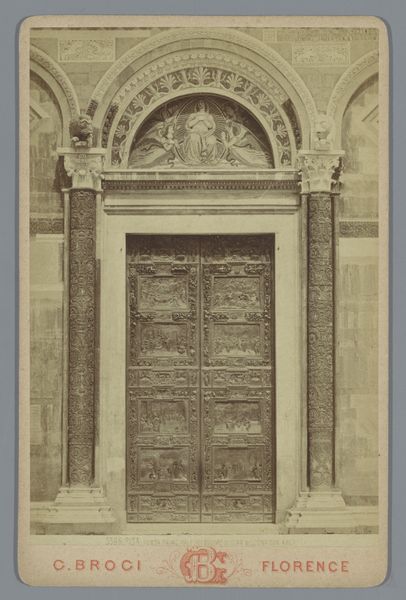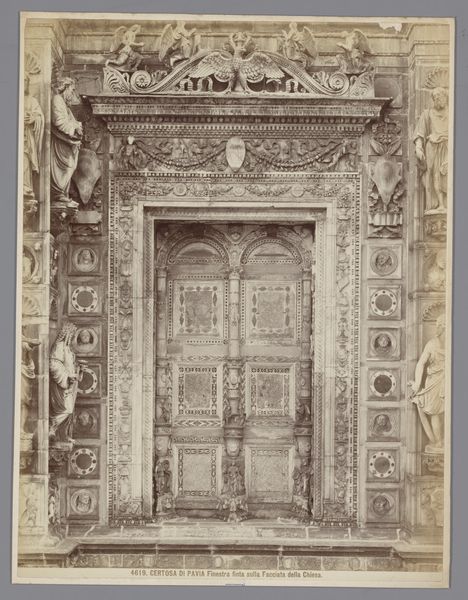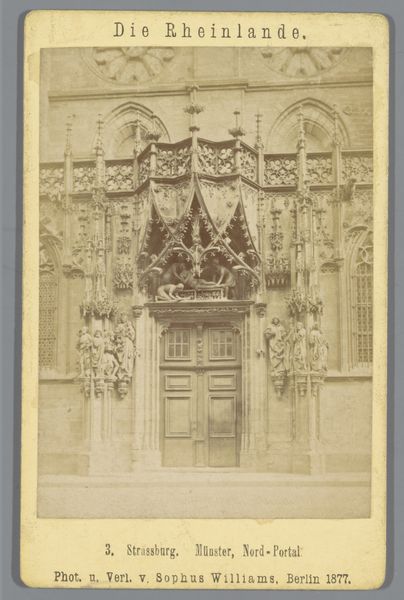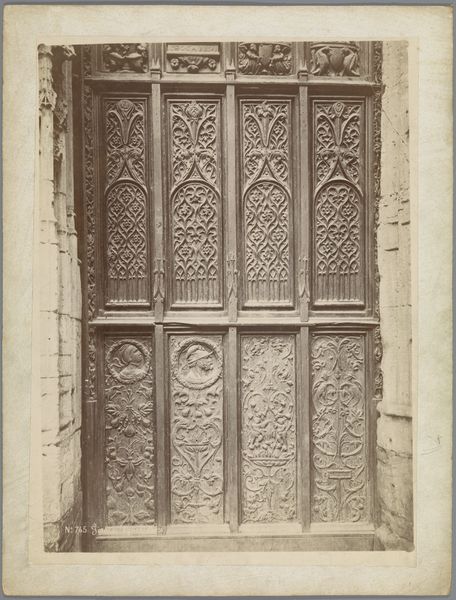
Gezicht op de poort van het weeshuis aan de Westerstraat in Enkhuizen 1865 - 1896
0:00
0:00
albertdekema
Rijksmuseum
Dimensions: height 167 mm, width 109 mm
Copyright: Rijks Museum: Open Domain
Albert Dekema captured this photograph of the Orphanage Gate in Enkhuizen in the 19th century, immortalizing its grand entrance. The stone gate is adorned with a wealth of symbols, each carrying the weight of history. Note the cherubic figures, reminiscent of classical putti, symbols of innocence and purity, commonly associated with love and protection. But observe how these motifs echo through time and space, reappearing in Renaissance paintings and even earlier in Roman art. Likewise, the masks, positioned like sentinels on either side, possess a long, complex history, their grimaces hinting at the need to ward off misfortune. The lion heads at the base are particularly evocative. Throughout centuries, the lion has symbolized strength, courage, and guardianship. It's a symbol that has journeyed from ancient Egypt to medieval Europe, adapting and evolving in meaning yet always retaining its aura of power. It’s as if the collective subconscious recognizes the lion as an enduring emblem of might. These symbols evoke a powerful sense of continuity, a reminder of the enduring human need for protection and hope. The orphanage gate, through its iconography, connects us to a shared past, a history of symbols that continue to resonate deep within our psyches.
Comments
No comments
Be the first to comment and join the conversation on the ultimate creative platform.
